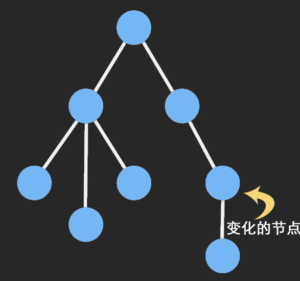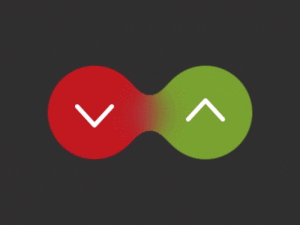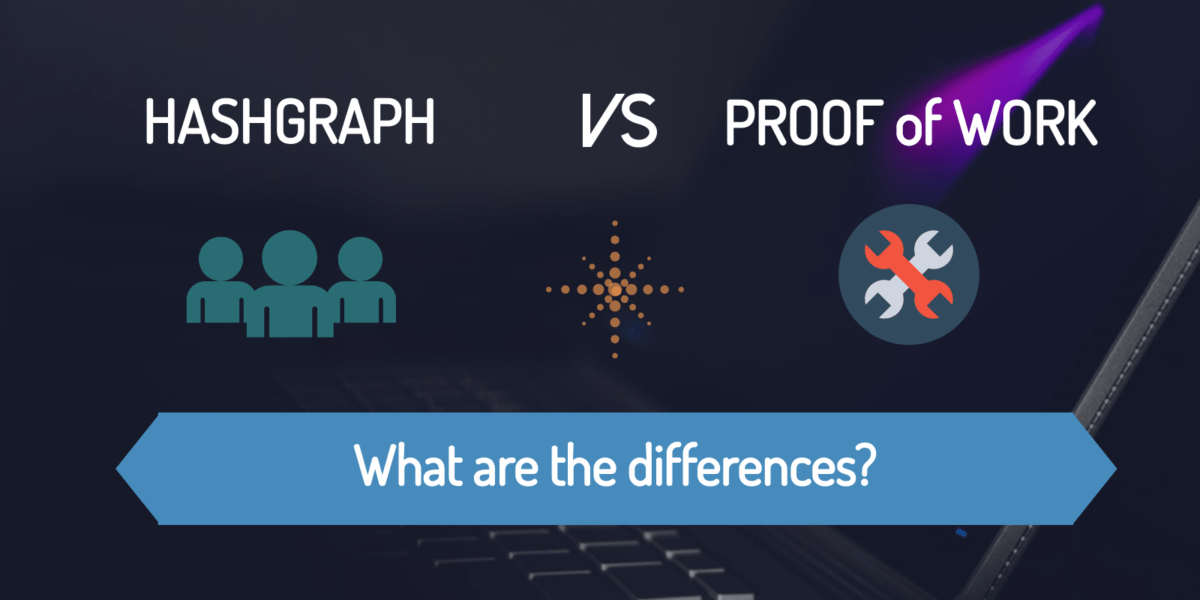Hey:-)
Another spanner is in the distributed ledger technology. We have been using blockchain technology to avoid third parties, skewed democracy, and outright dictatorship, and grappling with its inherent problems.
Enter Shared Worlds, aka Swirlds, and they have brought to the world what is known as the Hashgraph Consensus Algorithm.
It now starts to emerge that we do not necessarily have to enjoy distributed consensus solely by following blockchain technology with its attendant not-so-decentralized nature!

Bitcoin is too slow! What?
Yes… We can achieve distributed consensus in another way that is now informally known as the ‘gossip about gossip’ algorithm! The hashgraph consensus.
It is hard enough to talk about blockchain technology, and because we have to depart from it in this article, I will refer to it severally as we engage on a technology that promises much more than blockchain… and using gossip, no less!
Welcome!
What is a distributed consensus mechanism?
Simply put, a distributed consensus system is a set of rules followed by members that allow them to trade an asset, and agree on a particular sequence of transactions that trade that asset, without necessarily trusting any central entity.
Also, they don’t have to trust each other to determine that sequence, but rather follow strict rules that make this consensus possible.

The hits and misses of Blockchain technology
The genius going with the pseudonym of Satoshi Nakamoto gave us the blockchain technology. With it, we were able to have the first glimpse of distributed consensus.
And though he conceived bitcoin to be just a digital cash transfer system, there was the emergence of many technologies that depended on what the blockchain promised;
-
Immutability
-
initial security of proof of work,
-
the triumph over the double-spend problem,
-
the enthusiasm that early adopters injected into blockchain technology and
-
the promise of a future where the real power belonged squarely to the people regarding determining how the money would be created, used and transferred.
Bitcoin continues to be a runaway success, and a viable alternative to the gold standard regarding storage of value, even as it rides its volatile rollercoaster to record dizzying value-heights.

So why want to change… or improve?
When Satoshi created the cryptographic algorithm that he thought was going to liberate wealth creation and disbursement cheaply, he also, inadvertently or not, saddled us with several crypto-curses;
-
The blockchain scalability curse; from the outset, the blockchain technology was going to have an issue with scalability. If the distributed ledger were always going to increase in memory, even by a tiny margin, then nodes would only be more expensive in the future as they were forced to accommodate all data from the genesis block to the current state.
-
The proof of work curse; If proof of work was always going to be about who calculates what first, including redundant waste of energy and millions of wrong answers, then we were always going to direct resources to waste and compete doing ‘nothing‘ to achieve something. The other angle of this waste is the control that has now been gained by the miners over the network. The distributed consensus in proof of work systems is now just a cliché. It destroyed the SegWit2X hard fork in Bitcoin because miners wanted to continue earning astronomical fees to confirm transactions. It is a ticking time bomb.
-
The transaction speed curse; Because they have done a lot of ‘useless and wasteful work,‘ miners get to choose which transactions to embed onto the blockchain. Woe unto you if you did not give ‘something extra,‘ to get your transaction confirmed faster.
-
Centralized control, after all!; Another problem with blockchain technology as foreseen by hashgraph innovators is the migration of Proof of Work mining to cheap electricity destinations like China. Under one legal and economical realm, it is a short leap to nationalizing the rigs and destroying the network.
Enter Leemon Baird’s Hashgraph Consensus algorithm.
The wondrous innovation known as the Hashgraph is revolutionary and refreshing in light of what it brings. It effectively departs from the troubles of the blockchain without batting an eyelid. It addresses most of the challenges of blockchain technology.
In Baird’s own words, the hashgraph allows for each node to be able to add as many blocks as possible, branch out the hashgraph as often as possible, without any need for proof of work, and achieve 100% efficiency.
But How? You may ask. So let us answer you using its two main features;
‚gossip about gossip.‘
In hashgraph, the by-line is that each computer is communicating with any other computer and telling them what they don’t already know. And this information is structured like this;
“Hey Jane, I have just done transaction (a), and by the way, Bob, who was the last one to talk to me, has told me that he very recently transaction (b)!”
Now, the import of it here is that each computer could be adding a transaction to the network, and confirming the recent gossip of another one.
Just like binary fission in biology, the confirmations will very quickly explode inside the network, and everyone has an immediate large graphical data they can work with. They all know the true progression of transactions, and they don’t need to ask each other what the consensus is!
Now, this is huge!
There is no way you can be sure that all nodes in a proof-of-work blockchain know the transaction you want to honor, and agree that it is the ‘single truth.‘

Virtual Voting
In hashgraph technology, you know all the transactions, and you know the consensus without receiving anyone’s vote;
because it is possible to mathematically calculate exactly how anyone else would have voted if they were ‘good’ voters.
This phenomenon is made possible because you know the order of transactions from your graphical computation. So no voting is sent on the network, and the hashgraph achieves what is known as asynchronous Byzantine Fault Tolerance (aBFT) efficiently, safely, cheaply and extremely quickly.
aBFT is the ability of a distributed network to allow for less than 1/3 of its nodes to be ‘rogue’ nodes but still achieve consensus through mathematical probability.
Protection against Sybil attacks, in which many fake identities are maliciously placed in the network to disrupt normal transactional balance, is achieved by weighting some nodes using any rules deemed necessary.
These could include token ownership, transaction history or risk value, or a combination thereof.
How is computer memory efficiency achieved?
Each of the two possible digital identities you may gossip to another random computer can be compressed to less than a byte, and you have achieved a confirmation and a transaction generation all in one, without the need of mining or use of leader based systems.
Security implications?
By allowing aBFT, the hashgraph is secure and unbelievable processing speeds can be achieved while at the same time eliminating computational wastage and possible threats DDOS and Sybil Attacks.
Achieving Fairness
Unlike blockchain technology where miners determine which transactions enter the blockchain first through the fees system, Hashgraph transactions are timestamped and therefore serialized. Once gossiped, their ‘truth‘ is chronologically immutable and therefore verifiable.
Famous witness
To decide quickly the fair sequence of events, the hashgraph will provide several popular events that are held to be true soon after they happen by a majority of network members. These will be designated as famous witnesses, and they will help to determine fairly quickly the order of events, assisting in a very rapid consensus as time goes by, and therefore operate much like the support system or the skeleton of the gossiped hashgraph.
Strongly seeing
An interesting mathematical balancing happens when two nodes can accurately come to an agreement about how a third would have voted if it was a ‘good’ node.
That is, Can Jane and Bob calculate what Carol’s vote would have been, separately, and come up with the same answer? If so, then it is said they can strongly see Carol, and they no longer need a confirmation from Carol about her vote.

Any drawbacks?
This technology is very nascent, and the blockchain enthusiasts are still scratching their collective heads about how it will scale. Some may even try to frustrate the popularity of the hashgraph if they fully understand its disruptive potential.
Leemon Baird feels that it need not replace blockchain technology, but he is bullish about its place in the future of distributed ledgers technology (DLT).
However, Hashgraph is patented and therefore not open-source. The developers cite the need to consult their community before they avail the technology to others.

Final Thoughts
As you can tell, the jury is still out on the scalability of hashgraph as an alternative DLT. By introducing virtual voting, distributed fairness, gossip about gossip and the famous witness model, the hashgraph is boasting a capability of confirming more than 300,000 transactions per second!
Furthermore, Swirlds Inc. has secured their initial funding request of $3 million without even creating a currency, and are being pilot tested by large banks and a host of other entities.
Could it be worth a look? Do you think it will make blockchain technology seem like stone age? Read a conversation between Leemon Baird and Demetris Kofinas of Hidden Forces to judge for yourself before the next big thing after bitcoin passes you by!
best regards

Rene Wanzlik


1 thought on “Introducing the Hashgraph Consensus Algorithm”
Comments are closed.